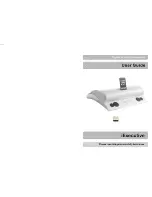
LED —
light-emitting diode — An electronic component that emits light to indicate the status of the computer.
local bus —
A data bus that provides a fast throughput for devices to the microprocessor.
LPT —
line print terminal — The designation for a parallel connection to a printer or other parallel device.
M
Mb —
megabit — A measurement of memory chip capacity that equals 1024 Kb.
Mbps —
megabits per second — One million bits per second. This measurement is typically used for transmission speeds for
networks and modems.
MB —
megabyte — A measurement of data storage that equals 1,048,576 bytes. 1 MB equals 1024 KB. When used to refer to
hard drive storage, the term is often rounded to 1,000,000 bytes.
MB/sec —
megabytes per second — One million bytes per second. This measurement is typically used for data transfer
ratings.
memory —
A temporary data storage area inside your computer. Because the data in memory is not permanent, it is
recommended that you frequently save your files while you are working on them, and always save your files before you shut
down the computer. Your computer can contain several different forms of memory, such as RAM, ROM, and video memory.
Frequently, the word memory is used as a synonym for RAM.
memory address —
A specific location where data is temporarily stored in RAM.
memory mapping —
The process by which the computer assigns memory addresses to physical locations at start-up.
Devices and software can then identify information that the microprocessor can access.
memory module —
A small circuit board containing memory chips, which connects to the system board.
MHz —
megahertz — A measure of frequency that equals 1 million cycles per second. The speeds for computer
microprocessors, buses, and interfaces are often measured in MHz.
microprocessor —
A computer chip that interprets and executes program instructions. Sometimes the microprocessor is
referred to as the processor or the CPU (central processing unit).
modem —
A device that allows your computer to communicate with other computers over analog telephone lines. Three
types of modems include: external, PC Card, and internal. You typically use your modem to connect to the Internet and
exchange e-mail.
module bay —
A bay that supports devices such as optical drives, a second battery, or a Dell TravelLite™ module.
monitor —
The high-resolution TV-like device that displays computer output.
mouse —
A pointing device that controls the movement of the cursor on your screen. Typically you roll the mouse over a
hard, flat surface to move the pointer or cursor on your screen.
ms —
millisecond — A measure of time that equals one thousandth of a second. Access times of storage devices are often
measured in ms.
N
network adapter —
A chip that provides network capabilities. A computer may include a network adapter on its system
board, or it may contain a PC Card with an adapter on it. A network adapter is also referred to as a
NIC
(network interface
controller).
NIC —
See
network
adapter
.
notification area —
The section of the Windows taskbar that contains icons for providing quick access to programs and
computer functions, such as the clock, volume control, and print status. Also referred to as
system tray
.
ns —
nanosecond — A measure of time that equals one billionth of a second.
NVRAM —
nonvolatile random access memory — A type of memory that stores data when the computer is turned off or loses
its external power source. NVRAM is used for maintaining computer configuration information such as date, time, and other
Summary of Contents for PR01X - Advanced Port Replicator 2U442
Page 21: ......





































